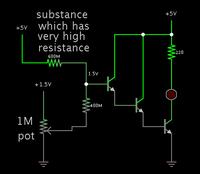moeedmughal
Junior Member level 2

- Joined
- Oct 1, 2015
- Messages
- 21
- Helped
- 0
- Reputation
- 0
- Reaction score
- 0
- Trophy points
- 1
- Location
- United Kingdom
- Activity points
- 196
Hello all,
I want to design a resistivity meter to measure resistivity of rock and sediment cores. I have gone through Wenner array (four electrodes) method which is an established technique. What are the other options to measure electric resistivity ? Any help regarding implementation of Wenner array or development of resistivity meter will highly be appreciated. Thank you in advance.
I want to design a resistivity meter to measure resistivity of rock and sediment cores. I have gone through Wenner array (four electrodes) method which is an established technique. What are the other options to measure electric resistivity ? Any help regarding implementation of Wenner array or development of resistivity meter will highly be appreciated. Thank you in advance.


